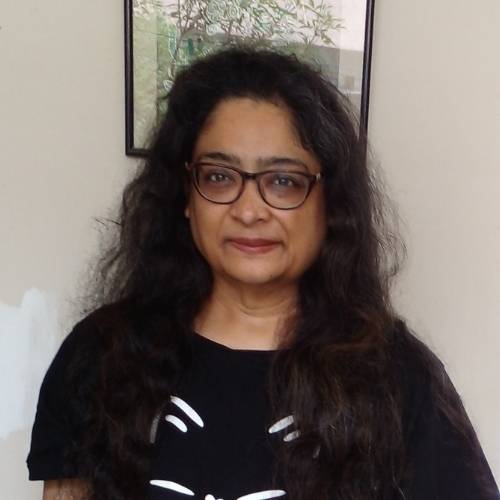Penguin Books 2012
K.S. Loganathan, the reviewer, is a consultant, chemical engineer, and author.
Susan Cain is a former lawyer, an alumna of Harvard Law School, an introvert, who turned to home making and writing. She ‘looks back’ on her years as a Wall Street lawyer as time spent in a foreign country. “It was absorbing, it was exciting, and I got to meet a lot of interesting people whom I never would have known otherwise. But I was always an expatriate.”
Synopsis
That aggressive, self-assured, extroverted personality types are highly valued in competitive, materialistic, success-orientated nations like the US is well-known. Introverted, person-orientated, easygoing types tend to be regarded as second-class citizens. How extroversion became the cultural ideal in the US is dealt with in detail in Chapters 1-3. America had shifted from what Warren Susman called a ‘Culture of Character’ exemplified by Abraham Lincoln to a ‘Culture of Personality’ (under Donald Trump?) and opened up a Pandora’s Box of personal anxieties, ‘a natural product of a society that was both dog-eat-dog and relentlessly social.’ America quickly developed from an agricultural society to an urbanized, ‘the business of America is business’ powerhouse. Dale Carnegie, Madison Avenue, Hollywood, IBM, Tony Robbins, and that temple of extroversion and doyen of vocal business leadership, Harvard Business School, and televangelists, all typify the rise of extraversion. The New Groupthink organized workforces into teams, even brainstorming in groups, and created open-office plans rendering creativity in solitude impossible. The rise of the worldwide web, however, has offered some respite for introverts, spawning wondrous creations via shared brainpower.
Text continued after image.

The basic personality type that a person has is a result of all factors in the person’s upbringing, including genetics. Psychologists accept that people do not change from one basic personality type to another, even though variations are possible, tempered by their pathological characteristics. The so-called Big 5 traits: introversion/extroversion, agreeableness, openness to experience, conscientiousness, and emotional stability encompass the gamut of personality traits.
Chapters 4-7 examine the biological basis of introversion, including brain structures in amygdala and neo-cortex, which are active participants in our emotional-rational lives. Recent research work by Jerome Kagan, the author of ‘Galen’s Prophecy,’ Dr. Carl Schwartz, and Dr. Elaine Aron are cited. Extroverts’ dopamine pathways lead to an emotional state called ‘the buzz’ – a rush of energized, enthusiastic feelings with a delightful champagne bubble quality. However, this may cloud their judgment. Financial and military history is replete with examples of extroverts charging ahead when they should have withdrawn. Introverts are threat-orientated and have an inbuilt loss-avoidance system, and so are less risk-taking. Despite the variety of experiences in our lifetime, our core traits remain constant.
Part 3 of the book deals with other cultures, in this case, mainly Chinese-Americans, who are more introverted and Mahatma Gandhi, who wielded soft power with devastating effect on the British Empire.
The value of the book is in Part 4, which advises introverts on how to love and how to work in the US.
If you are an introvert in corporate America, you should spend your weekdays striving to ‘get out there, mix, speak more often, and connect with your team and others, deploying all the energy and personality you can muster’ and retreat for quiet weekends. In other words, engage in a certain level of pretend-extroversion. Identify your core personal projects, and develop a ‘restorative niche’ as Professor Brian Little advocates. (Little also extolls the book as ‘superb’.)
In personal life, introverts who are married to extroverts must both strive to understand each others’ different ways and accept the realities to resolve their differences. Parents of introverted children must expose their children gradually to new situations and people and determine the right schools to put them in. ‘The secret to life,’ the author says, ‘is to put yourself in the right lighting’ (and not to avoid the spotlight). As group dynamics contain impediments to creative thinking, whereas solitude is often a spur to creativity, companies must think twice about how to design office space to accommodate both group interactions and “rabbit holes into which Alices can tumble”.
My Views:
Susan Cain presents a strong case for introverts vs. extroverts in the US, emphasizing that the more socially desirable types have limitations, while the silent minority of introverts who receive fewer social rewards have assets which make them valuable, too. There is no doubt that healthy introverts are profound thinkers and visionaries, even geniuses, such as Albert Einstein, Sigmund Freud, and Emily Dickinson. However, Susan Cain glosses over the intersection of introversion and other negative traits, such as neuroticism, schizoid behavior, delusions, and nihilism. The stress caused by social isolation and the physical exhaustion brought about by a hyperactive mind may eventually result in thought disorders and over-dependence on anxiety drugs, much of which plagues America today.
The book cover is understated, in subdued white, with the title and author’s name embossed, in sharp contrast to Americana, with red, blue, stars and stripes emblazoned in much of its merchandise.
The book is a must-read for expatriates in the USA who may find the pace loud and hectic. Just where can the true-blue introverts in the world find a sanctuary?
In Finland, of course. Finland is a famously introverted nation. Finnish Joke: How can you tell if a Finn likes you? He is staring at your shoes, instead of his own. (Page 14, ibid.)











